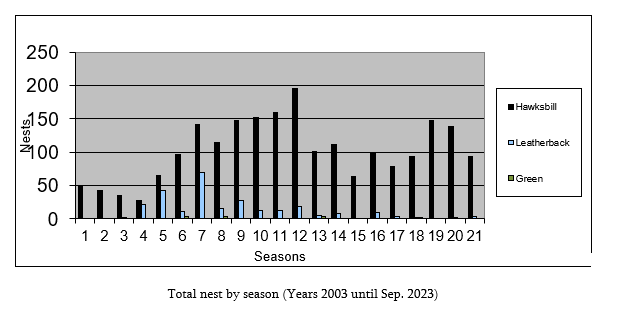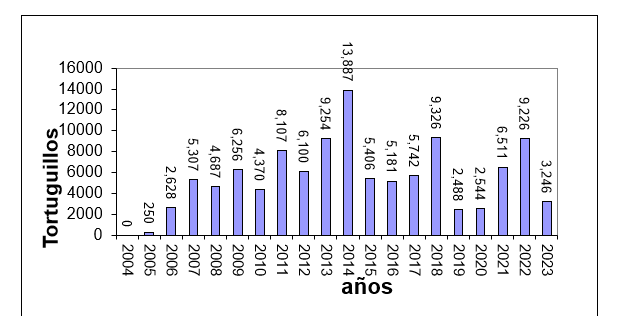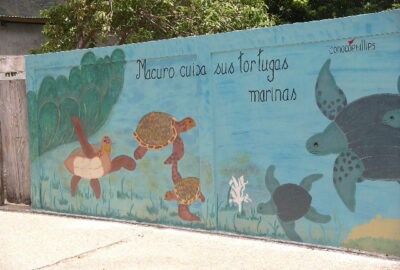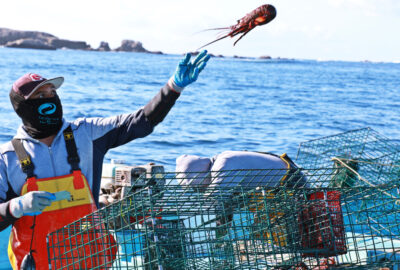How the Aquarium’s Marine Conservation Action Fund Supported the Macuro Project in Venezuela
Hear from Marine Conservation Action Fund Project Leader Clemente Balladares on conserving sea turtles in Venezuela's Gulf of Paria.
By New England Aquarium on Thursday, October 19, 2023

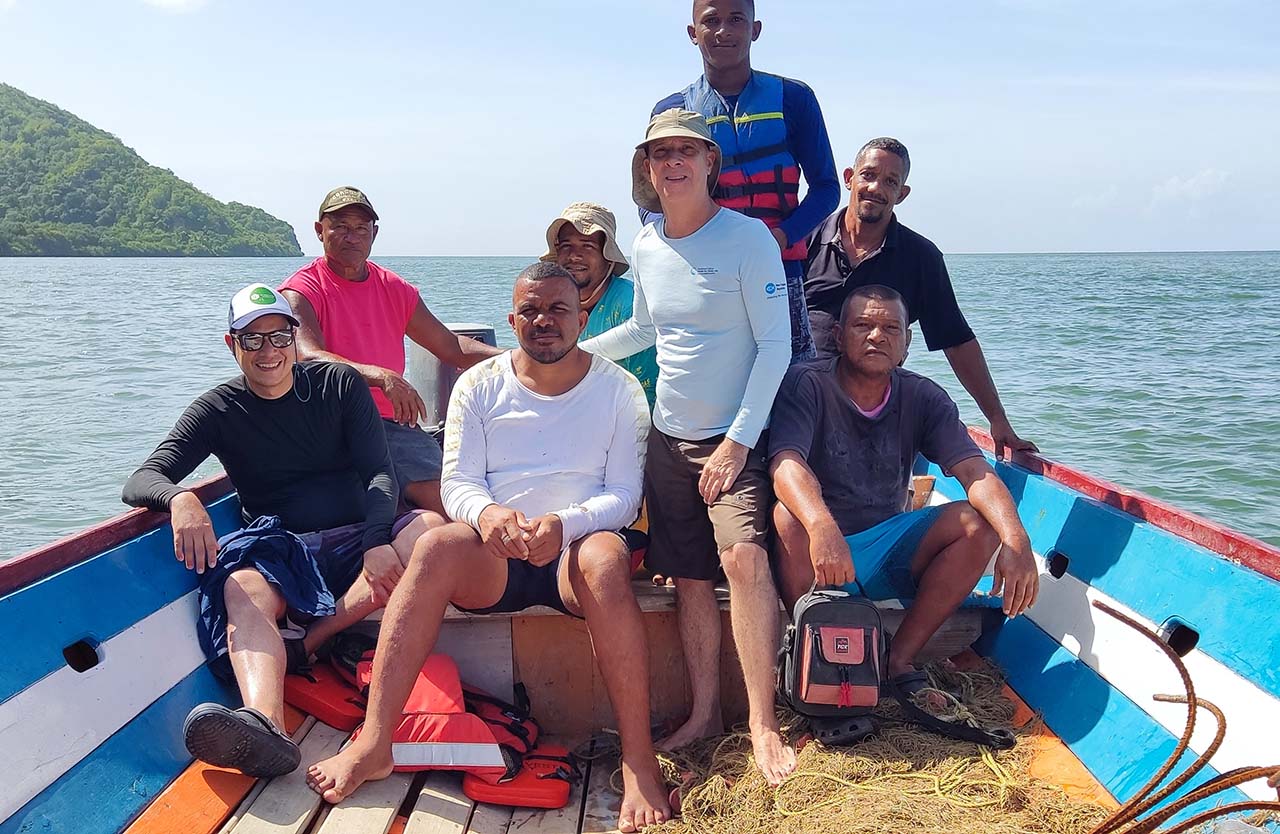
This post is one of a series on projects supported by the New England Aquarium’s Marine Conservation Action Fund (MCAF). Through MCAF, the Aquarium supports researchers, conservationists, and grassroots organizations around the world as they work to address the most challenging problems facing the ocean.
By: Clemente Balladares
In the years 2021–2023, the Marine Conservation Action Fund (MCAF) played a crucial role in sustaining the Macuro Project in Venezuela, specifically focusing on the conservation of sea turtles in the Paria Gulf.
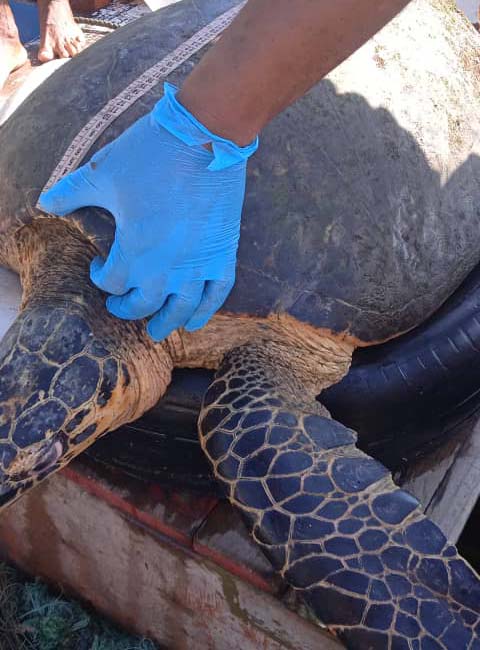
In 2020, Venezuela was grappling with a severe socio-economic crisis, which had significant humanitarian and environmental repercussions. During the period from 2003 to 2012, the country successfully implemented a sea turtle conservation program in the Gulf of Paria. However, as the new decade began in 2013, the Venezuelan government faced a shortage of funds, which severely affected the conservation efforts. This gap in funding was partially addressed through contributions from private donors and individuals. Unfortunately, by 2016, crucial aspects of the program, such as anti-poaching patrols, environmental education, and operational funding had been neglected, leading to adverse consequences for the regional wildlife.
New national private funders, like TBL Vnzla, emerged and provided support until 2019. However, it was the award from MCAF in 2021 that marked a turning point for the Macuro Project. MCAF provided the essential funds for boat patrols and the employment of two local assistants. The results were remarkable: 147 turtle nests were recorded, with only 7.48 percent being poached. The total number of hawksbill hatchlings released reached 6,511, nearly tripling the numbers from the previous years of 2020 (2,544) and 2019 (2,488), with an average of 6,002 (± 826) hatchlings per year since the 2006 season.
In 2022, in addition to continuing sea turtle conservation efforts, the Macuro Project reintroduced vital environmental education initiatives for the young students of Macuro town’s primary and secondary schools. This involved educating 100 students out of a total of 290 on six relevant nature subjects as extracurricular activities. Furthermore, the project succeeded in reducing poaching to just five percent and released an impressive 9,227 hawksbill hatchlings.
In 2023, with guidance from MCAF, the Macuro Project enhanced its nest management strategies to promote sustainability. They aimed to reduce translocation, or relocation of nests, which can lead to embryo loss due to the fragile nature of the eggs after being laid. Nest poaching in the region had reached alarming levels of 88 percent (Balladares & Dubois, 2014). To address this issue, the project decided to take the natural, in-situ approach—tightening early patrols, erasing nester tracks, and concealing nests on the five main nesting beaches near Macuro. Preliminary results were promising, with a maximum emergence success rate of 95 percent for in-situ nests compared to 74 percent for nests away from their original location. Poaching also decreased to just three percent during this year.
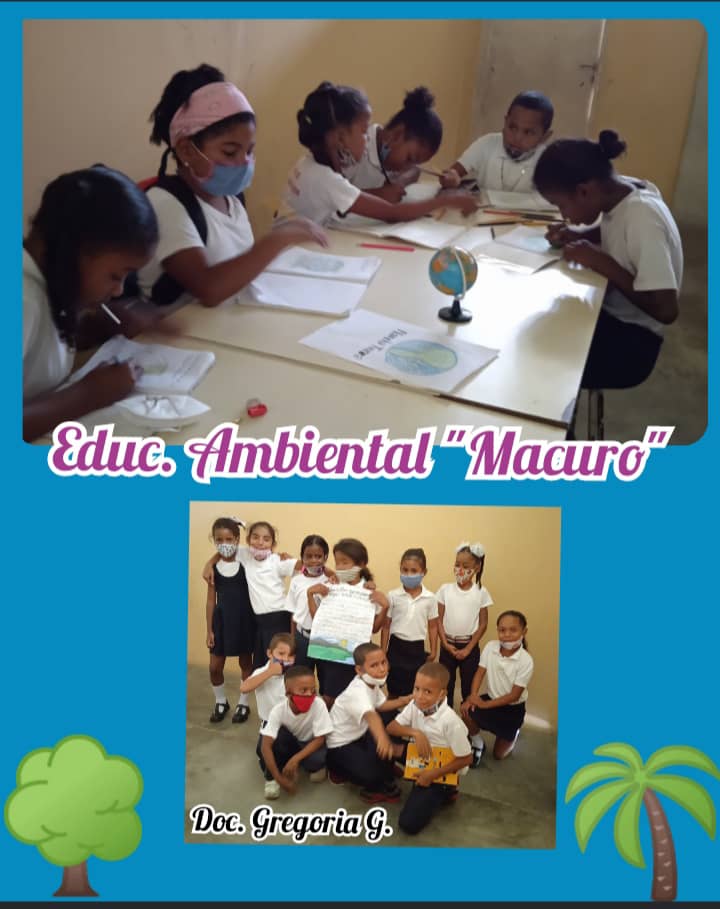
In terms of environmental education, the project expanded its reach in 2023 to cover half of Macuro’s student population (150 students) and introduced “Fishermen Talks.” These discussions aimed to raise awareness among local anglers about the benefits of sea turtle protection, emphasizing how more sea turtles meant fewer fish larvae predators (such as medusa, a juvenile form of sea jellies) and healthier juvenile fish habitats, such as coral reefs. The talks also highlighted the challenges facing Macuro’s fishermen, including a dwindling number of boats and workforce due to fuel scarcity and economic crises. While this trend might be beneficial for regional fish stocks, it poses challenges to the national economy.
However, it’s worth noting that Macuro’s anglers are no longer openly catching sea turtles, as they did 20 years ago. In 2023, the project’s new in-water program involved collaborating with careful netting efforts near Los Garzos’s beach, the main hawksbill rookery, or nesting area. Fishermen would contact project assistants and boaters when they accidentally trapped sea turtles. Between April and September, the project tagged, sized, and determined the sex of six juvenile and subadult turtles, including three green turtles and two hawksbill males.
All these activities have not only strengthened sea turtle conservation and research in the Gulf of Paria but have also raised awareness within the local community. The project’s plan for 2024 is to focus on sustainability through ecotourism in the neighboring Peninsula de Paria National Park, refrain from relocating nests, and cover the entire student population of Macuro (290 pupils). Despite facing numerous challenges, the Macuro Project remains resilient and committed to its mission.
